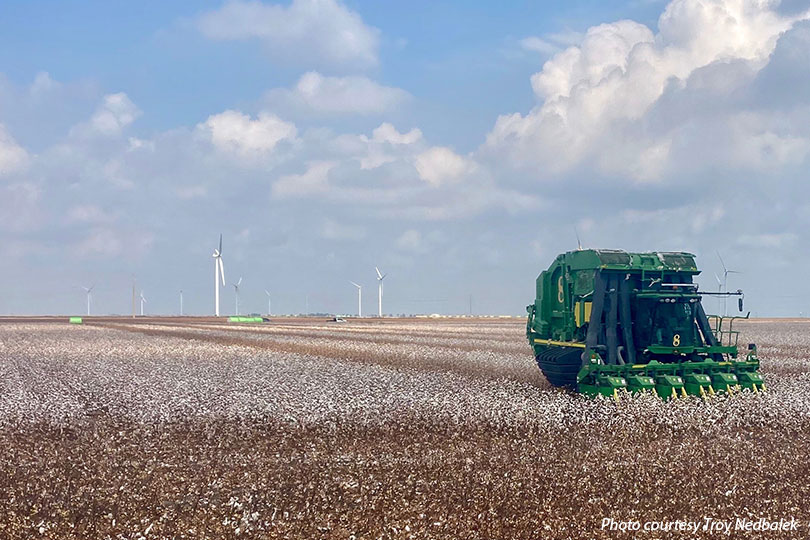By Shelby Shank
Field Editor
Timely spring rains and scattered summer showers helped San Patricio County farmers bring in an average cotton crop this year, but grain sorghum yields told a different story.
About two-thirds into harvest, local cotton yields were holding steady.
“Most everything that we’ve harvested so far has been in the thousand-pound range, and that’s kind of an average crop for area dryland,” Troy Nedbalek told the Texas Farm Bureau Radio Network. “Quality wise, it’s been mostly good to very good. Everything was dependent upon when we got rain and whether or not you did get rain. There are some spotty areas in the county that have had lower yields, but it hasn’t really affected the quality that much.”
Those lower-yield areas have been about 750 pounds per acre instead of 1,000 pounds, which is roughly a quarter of a bale lost.
“In the low-price environment we’re in, flirting with 70 cents for December cotton, those numbers just don’t pay the bank back,” he said.
A lack of moisture early in the year forced farmers to delay planting as they waited on rain.
“We actually started out not knowing whether we would even have a crop. We planted late because we did not have suitable planting moisture for most of our acres until after the 25th of March,” Nedbalek said. “We got about a four-inch rain on the 25th, and that kind of put us back in farming mode again because we were planning on dry planting.”
However, they’re harvesting later than normal and that has affected their yield to some extent.
By harvest, farmers had received only about eight inches of rain since March—half of what they typically need during the growing season.
“That’s enough to have made the crop because the timing just worked out, but it’s still below average,” Nedbalek said.
Despite the challenges, cotton has been resilient where grain sorghum has lacked. Sorghum yields were far less forgiving.
“Cotton is very resilient once you get it out of the ground, but sorghum has a bunch root that stays closer to the surface. If you don’t get good surface moisture and continual rain, it suffers more than cotton, and that’s exactly what we saw this year,” he said.
San Patricio County’s geography also made a difference. Highway 77 splits the county, with sandy, lighter soils to the west and heavier, more moisture-holding soils to the east.
“On the east side, we’ve seen three, four, even five bales to the acre in some fields. On the west side, we’ll be fortunate to average two bales,” Nedbalek said. “That’s a huge disparity in yield potential from one end of the county to the other.”
White harvest wraps up, prices weigh heavy on farmers’ minds.
“Input costs continue to rise, and when you talk about 70-cent cotton, it’s tough. I’ve been farming over 30 years, and we had 70-cent cotton when I started, but inputs back then were half or less of what they are now. We’re still just trying to scratch a living out here,” Nedbalek said. “We need these prices to start moving northward, because every time they start moving south, it’s bad news for the farm economy.”


Leave A Comment